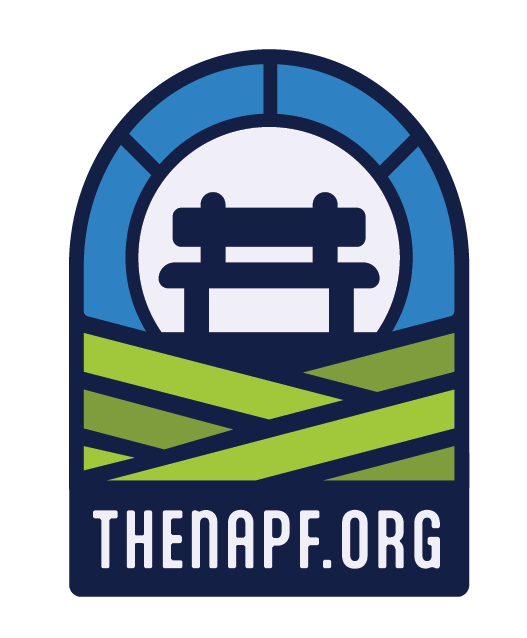NAPF Blog

Starting or scaling a park foundation is a rewarding yet complex journey. From forming a board and defining your mission to launching fundraising campaigns and developing strategic partnerships, there's a lot to consider. Thankfully, organizations like the National Association of Park Foundations (NAPF) are here to help at every step. Whether you're launching a brand-new foundation or looking to build capacity in an existing one, NAPF offers a wealth of resources—webinars, training programs, templates, and one-on-one consulting—to guide your growth. This post breaks down: Why and how to start a park foundation Key focus areas for growth The full suite of NAPF resources (free and paid) How to make the most of your NAPF membership Why Start a Park Foundation? A park foundation supports the mission of a local park agency through fundraising, community engagement, volunteer management, and program support. Unlike general nonprofits, park foundations work in direct partnership with their corresponding park agency to enhance public spaces and recreational opportunities. NAPF’s Philosophy: "Park foundations exist solely to serve the mission of the park agency. We don’t start park foundations on their own.” – Kevin D. Korenthal, CAE, NAPF Executive Director Key Pillars of a Successful Park Foundation Strong Board Development Foundations thrive on the strength of their boards. NAPF offers: A 90-minute to 2-hour remote board training that covers board roles, strategic planning, risk management, and more. A recorded version and transcript, ideal for onboarding new board members. “It has been a game changer... even seasoned board members say they learned new things.” Fundraising Strategy NAPF emphasizes building unrestricted, sustainable funding streams rather than relying heavily on grants. Programs offered: Annual Fundraising Training (8-week online course) Develop a fundraising case statement Learn donor psychology and current best practices End with a ready-to-use fundraising plan Starting and Building a Park Foundation Course (4-week online) Led by the former ED of the Minneapolis Park Foundation Covers MOU development, capital campaigns, sponsorship programs, volunteer management “By the end of 8 weeks, you’ll have your case statement and fundraising plan... These are real-world tools.” Effective Partnership with Your Agency A strong Memorandum of Understanding (MOU) is essential. NAPF provides: Templates from “super simple to overly complicated” Guidance on how to structure your relationship for long-term success Strategy for shifting from startup support to funds flowing back to the park agency “The MOU is a living document... The goal is to change the flow of money back into the park agency.” NAPF Membership: What’s Included? A regular NAPF membership includes: ✅ Access to a growing catalog of 30+ webinars on governance, capital campaigns, board development, and more ✅ One-on-one consulting with NAPF leadership ✅ Templates, policy guides, and downloadable documents ✅ Access for your entire board ✅ Invitations to member-only events and webinar series Most resources—including Kevin's time—are available at no extra cost under membership. “We’re kind of a concierge for park foundations... We haven’t been stumped yet.” Paid Programs (With Member Discounts) These deeper-dive programs offer powerful, lasting impact: Program Duration Focus Cost Notes Board Training 90–120 min Roles, mission/vision, risk Discounted for members Recorded for reuse Starting & Building a Park Foundation 4 weeks MOU, capital campaigns, volunteer management Members only Synchronous cohort model Annual Fundraising Training 8 weeks Case statement, donor psychology, fundraising plan Members discounted Up to 2 attendees Upcoming Resources NAPF is constantly developing new content and tools: Annual webinar series (coming late winter/early spring) Compensation study to support hiring and staffing strategy Additional downloadable tools and templates Cost of Membership As of Dec 2025: First-year membership: $450 (rising to $700 on Feb 1, 2026) Renewals: $450/year “Even if you're just starting, there is no too early to join... You can begin learning and preparing right away.” Final Thoughts Whether you’re: Just forming a foundation Struggling with board engagement Looking to shift from grants to sustainable donations Or trying to develop a strategic plan… NAPF provides tools, training, and expert support that align with your growth journey. And more than just resources—they offer a partnership. “Foundations that take full advantage of their NAPF membership grow much faster than those going it alone.” Ready to Get Started? 🔗 Visit www.theNAPF.org 📩 Contact Kevin Korenthal directly for questions or consulting 💬 Discuss membership with your board before Feb 1 to lock in lower rates Starting or growing a park foundation doesn’t have to be overwhelming. With the right resources and guidance, your foundation can become a powerful engine for change in your community’s parks and recreation system.
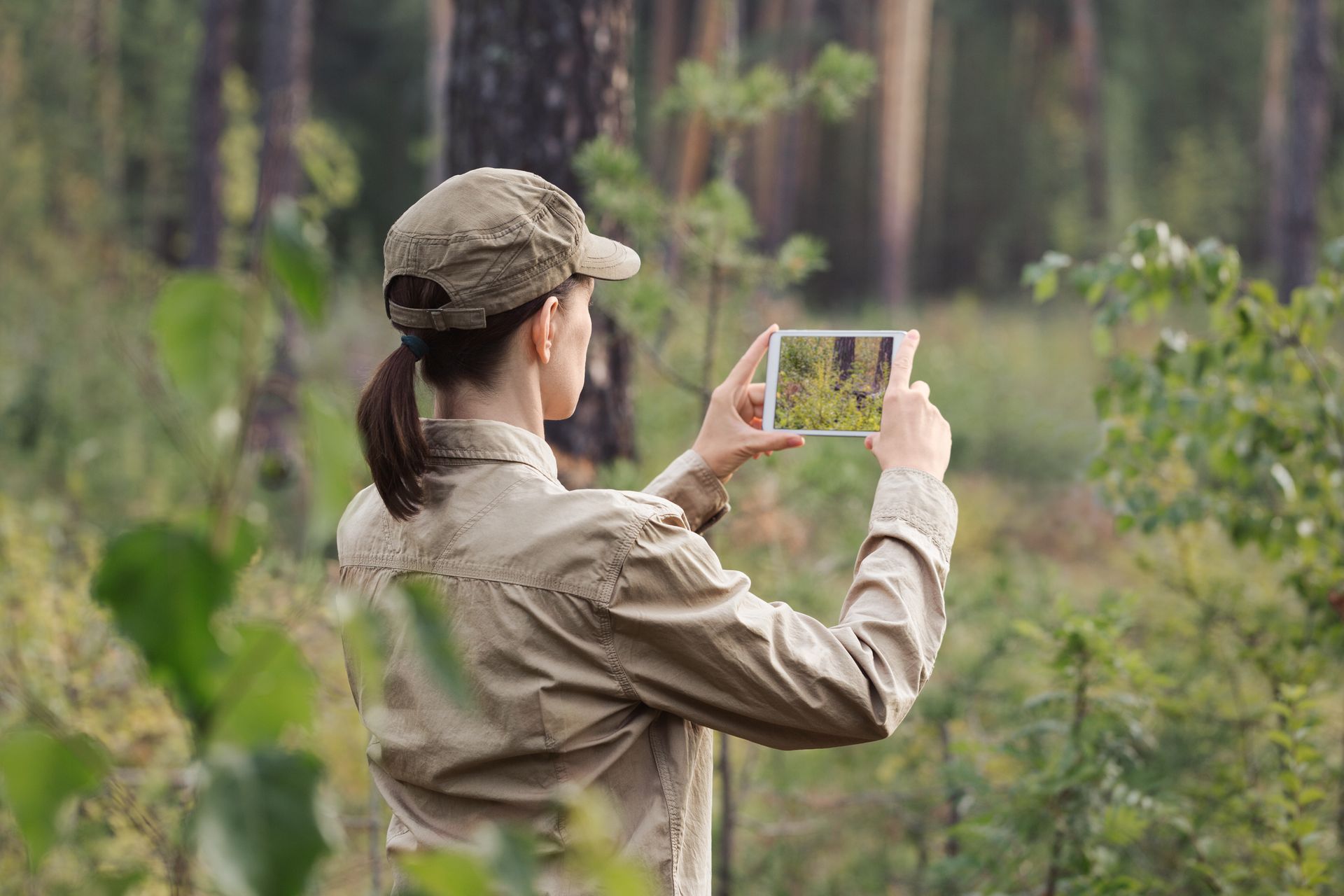
Recently, a once-promising community foundation closed its doors after years of good work in environmental education and community engagement. The decision to dissolve came amid mounting financial pressures, unpaid tax obligations, and the sudden loss of key federal grants that had sustained much of the organization’s operations. The board, to its credit, remained through the difficult process to support staff and AmeriCorps members as the organization transitioned its programs to other nonprofits. While the circumstances are heartbreaking, they also serve as a vital learning opportunity for every nonprofit leader and board member. Grants Aren’t a Guarantee Grants are a blessing—until they’re not. Many nonprofits build their budgets around grant funding without recognizing the inherent risk that comes with it. Government and foundation grants are typically time-limited and subject to shifting political or funding priorities. When those priorities change, organizations that rely heavily on them can find themselves suddenly without the resources they need to meet payroll or maintain operations. Grants should be viewed as one piece of a diversified funding strategy, not the foundation upon which an entire organization stands. Boards Must Understand the Finances Too often, nonprofit boards focus on programs and mission while leaving financial management entirely to staff. But boards have a fiduciary duty to understand not just the numbers, but the sources of those numbers—where money comes from, what strings are attached, and what tax implications might arise. “Trust but verify” should be every board’s guiding principle. That means asking hard questions, reviewing budgets and cash flow regularly, and ensuring the organization’s financial structure can withstand the loss of any single funding source. Compliance Isn’t Optional One of the most sobering lessons from this case involves unpaid payroll taxes and other federal obligations. It’s a reminder that compliance with tax and employment laws is not simply an administrative detail. It’s a core responsibility. When those obligations go unmet, the consequences can be devastating not only to the organization but to its reputation, leadership, and beneficiaries. The Case for Annual Fundraising Ultimately, the best insurance policy against financial collapse is a robust and evolving annual fundraising plan. This includes individual giving, events, corporate partnerships, and other unrestricted revenue sources that provide flexibility and resilience. A healthy donor base offers stability that grants alone cannot match. Moving Forward While this story ends in closure, there are glimmers of hope. Other organizations have stepped in to continue parts of the mission, and many former staff members have already found new roles. The board handled a difficult situation with integrity, transparency, and compassion. If there’s one takeaway for other nonprofits, it’s this: never take financial stability for granted. Strong governance, diverse funding, and proactive oversight are not luxuries—they are lifelines. To learn more about governance and fundraising best practices in parks and recreation philanthropy, reach out to the only dedicated, national provider of parks and recreation philanthropy education and training at thenapf.org.

The National Association of Park Foundations (NAPF) is proud to once again celebrate the creativity, leadership, and impact of park foundations nationwide through the Lehman Awards, presented by Greenfields Outdoor Fitness and sponsored by the Charleston County Parks Foundation and Friends of Belfast Parks & Recreation. These annual awards recognize the very best in park philanthropy, fundraising, and community engagement. When & Where Join us for the Lehman Awards Breakfast at the 2025 NRPA Conference in Orlando, Florida, on Wednesday, September 17, at 7:30 AM. This special event includes a complimentary continental breakfast, time to network with peers, and the recognition of this year’s award winners. The Awards The Lehman Awards honor achievements in four key categories: Outstanding Capital Campaign – Celebrating major fundraising efforts that deliver significant capital improvements or new park facilities. Excellence in Annual Fundraising Strategy – Recognizing sustainable, year-round revenue programs that strengthen foundations. Emerging Star Foundation – Highlighting newer organizations that are already delivering meaningful community impact. Innovation in Community Engagement – Showcasing creative partnerships and outreach that connect parks with people in powerful ways. Why Attend The Lehman Awards Breakfast is more than a recognition ceremony — it’s a chance to learn from inspiring projects, hear directly from award recipients, and connect with colleagues from across the country. Attendees will also take part in interactive breakout discussions, sharing best practices and gathering ideas to bring back to their own communities. Registration Details This event is free to attend, but advance registration is required to secure your seat. Don’t miss this opportunity to be part of a celebration that uplifts the very best in park philanthropy and inspires all of us to do more for the communities we serve. Register here .

A nonprofit organization's board handbook typically contains a range of policies, documents, and information to guide and inform board members in their roles and responsibilities. While the specific contents may vary based on the organization's size, mission, and needs, here are common elements you might find in a nonprofit board handbook: 1. Mission and Vision Statements: An overview of the organization's mission, vision, and core values to provide context for board members. 2. Organizational Structure: Information about the organization's structure, including its bylaws, articles of incorporation, and governance structure. 3. Board Roles and Responsibilities: A clear description of the duties, expectations, and responsibilities of board members, including their fiduciary duties. 4. Board Meeting Procedures: Guidelines for scheduling, preparing for, and conducting board meetings, including agendas, minutes, and meeting protocols. 5. Committee Descriptions: An outline of board committees, their purposes, and the roles and responsibilities of committee members. 6. Financial Policies: Financial procedures, budgets, and guidelines for monitoring the organization's financial health. 7. Conflict of Interest Policy: A policy outlining how board members should identify, disclose, and manage conflicts of interest. 8. Code of Ethics: A statement of ethical standards and principles that board members are expected to uphold. 9. Strategic Plan: An overview of the organization's strategic goals and objectives, along with the board's role in advancing them. 10. Legal and Compliance Information: Information about the organization's legal status, including its tax-exempt status, compliance with nonprofit regulations, and any other legal requirements. 11. Fundraising and Development Policies: Guidelines for fundraising efforts, donor relations, and grant-seeking activities. 12. Board Member Contact Information: A directory of board members, staff, and key contacts within the organization. 13. Historical Documents: Archived meeting minutes, annual reports, and other historical documents that provide context and continuity. 14. Emergency and Crisis Management: Information on how the organization responds to crises and emergencies. 15. Whistleblower Policy: A mechanism for reporting and addressing unethical or illegal activities within the organization. 16. Board Member Expectations: Clear expectations for attendance, participation, and engagement by board members. 17. Succession Planning: Information about leadership succession and the process for filling board vacancies. 18. Insurance and Liability Coverage: Details regarding insurance policies and liability coverage for board members. 19. Confidentiality and Data Security: Guidelines for handling sensitive and confidential information securely. 20. Evaluation and Self-Assessment: Procedures for board self-assessment, performance evaluation, and continuous improvement. A well-organized and comprehensive board handbook can help onboard new board members effectively and provide a valuable reference for all board members in fulfilling their duties and responsibilities. It can also serve as a tool for promoting transparency and accountability within the organization.

Purpose This brief outlines how 501(c)(3) park foundations can accept gifts of publicly traded stock and why doing so is a smart and beneficial addition to any charitable giving strategy. It is intended to support internal discussions and decision-making around the adoption of stock donation capabilities. The Opportunity Gifts of appreciated stock offer a compelling alternative to traditional cash donations. When a donor gives stock that has increased in value over time, both the donor and the nonprofit benefit: • The donor avoids capital gains tax on the appreciated value of the stock. • The donor may deduct the full fair market value of the stock on their taxes if held longer than one year. • The foundation receives the full value of the asset and can convert it into usable funds. This type of giving can be especially appealing to donors looking to support your mission while managing their own tax liability. What’s Required to Accept Stock Donations To accept stock, a park foundation must have the following in place: 1. A brokerage account registered in the foundation’s name. This is where the donor’s transferred shares will be received. Many community foundations or financial institutions can help set this up at little to no cost. 2. Transfer instructions for the donor. These include: o The foundation’s brokerage name o Account number o DTC number (for electronic transfers) o A contact person at the brokerage firm 3. A policy for non-cash gifts (recommended). This internal guideline should describe how stock gifts are reviewed, when they are liquidated (typically immediately), and how they are acknowledged. Next Steps If your foundation is not yet set up to receive stock, it is well worth the time to establish the necessary infrastructure. Most brokerage accounts can be opened within a few days. Having a stock donation process in place opens the door to more significant and tax-advantaged gifts — especially at year-end or during capital campaigns. Sample Language for Donors When a potential donor inquires, the following language can be used: “Yes, our foundation accepts gifts of publicly traded stock. This is often a tax-efficient way to give and allows you to support our mission with appreciated assets. I’d be happy to provide you with the necessary transfer information.” Conclusion Accepting stock donations enhances your foundation’s fundraising capacity and aligns with common philanthropic practices among major donors. Establishing the infrastructure now ensures your organization is prepared when the opportunity arises.
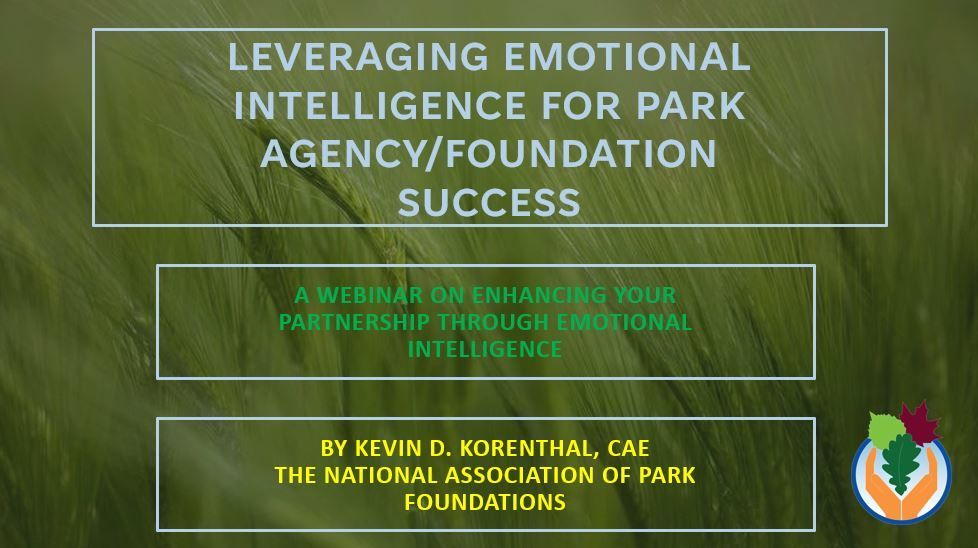
In today’s fast-paced and interconnected world, Emotional Intelligence (EQ) is more than just a buzzword—it's a critical skill that drives effective leadership, fosters collaboration, and enhances organizational success. The National Association of Park Foundations (NAPF) recently hosted a webinar presented by Kevin D. Korenthal, CAE, focusing on how park agencies and foundations can harness EQ to build strong partnerships and achieve their mission-driven goals. This blog explores the insights shared in the webinar, providing a comprehensive understanding of EQ, its importance in the park foundation/agency relationship, and practical steps for developing and applying EQ skills. What is Emotional Intelligence (EQ)? Emotional Intelligence is the ability to perceive, understand, and manage emotions effectively in oneself and others. It involves recognizing emotional cues, responding appropriately, and balancing emotional and rational thought for sound decision-making. EQ also encompasses empathy, social skills, and conflict resolution, making it essential for building meaningful relationships and navigating social complexities. For park foundations and agencies, EQ means fostering collaboration, trust, and mutual respect in partnerships. It plays a vital role in both personal and professional development, enhancing leadership, teamwork, and resilience. Key Components of EQ The foundation of Emotional Intelligence lies in five key components: Emotional Awareness: Understanding one’s own emotions and recognizing those of others, fostering deeper connections with donors, partners, and communities. Self-Regulation: Managing emotions to remain calm and focused, even in challenging situations. Empathy: Seeing things from others’ perspectives to build trust and stronger relationships. Social Skills: Communicating effectively, collaborating, and navigating complex partnerships. Motivation: Staying committed to goals and inspiring others to support the mission. Embracing these components enables park professionals to create stronger connections and achieve greater impact together. Why EQ Matters in Park Foundation/Agency Relationships The dynamic and collaborative nature of modern workplaces, especially in the nonprofit sector, makes EQ indispensable. High EQ enhances communication, conflict resolution, and relationship-building with colleagues, donors, and stakeholders. It is also a cornerstone of effective leadership, fostering motivation, resilience, and adaptability. As automation increases, human-centric traits like empathy and emotional awareness become increasingly valuable. Organizations prioritize EQ for its positive impact on teamwork, job satisfaction, and overall performance. Unlike IQ, EQ can be developed, making it a critical skill for thriving in the evolving professional landscape. Korenthal shared a personal anecdote, highlighting his initial struggles with EQ early in his career. Taking criticism personally and lacking patience strained his professional relationships and cost him a promotion. However, mentorship and dedicated effort to improve his EQ transformed his career trajectory, underscoring the power of emotional intelligence. Statistics and Case Studies: The Power of EQ Research underscores the transformative impact of EQ in the workplace: EQ accounts for 58% of job performance, with 90% of top performers possessing high EQ (TalentSmart). Teams with high EQ report better collaboration, higher job satisfaction, and reduced burnout. PepsiCo leaders with high EQ achieved 10% higher productivity and 87% less turnover. High-EQ recruiters in the U.S. Air Force outperformed peers by 300%, saving $3 million annually. In healthcare, emotionally intelligent staff improved patient satisfaction, outcomes, and reduced claims. These case studies illustrate how prioritizing EQ can lead to measurable benefits across industries, enhancing individual performance, organizational success, and community trust. Developing Your EQ Skills Building Emotional Intelligence begins with self-assessment. Identifying strengths and areas for improvement sets the stage for growth. Here are practical steps to enhance your EQ: Self-Assessment: Use tools to evaluate your current EQ level. Emotional Awareness: Practice active listening and maintain eye contact to build trust. Self-Regulation: Use breathing exercises or count backward from 5 to manage emotions during high-pressure situations. Empathy: Read stories of individuals overcoming challenges to gain diverse perspectives. Social Skills: Join networking groups to refine communication and collaboration abilities. Constant evaluation and benchmarking are key to a successful EQ journey. Regular assessments help track progress and refine strategies for continuous improvement. Applying EQ to Advance Partnerships Emotional Intelligence is instrumental in advancing partnerships within parks and recreation philanthropy. Key applications of EQ include: Building Trust: Through emotional awareness and empathy. Conflict Resolution: By practicing self-regulation. Effective Communication: Using active listening and clear messaging. Adaptability: Navigating challenges with resilience. Motivation: Inspiring shared commitment to goals. The benefits of applying EQ in partnerships are profound—enhanced collaboration, stronger relationships, aligned goals, and improved project outcomes. Creating an Emotional Intelligence Development Plan Unlike IQ, EQ can be cultivated through intentional practice. A personal EQ development plan involves: Self-Assessment: Identify your current EQ level. Goal Setting: Define what you aim to achieve. Action Steps: Practice emotional awareness, self-regulation, empathy, and social skills. Timeline: Set specific timelines for improvement. Tracking Progress: Maintain a journal to document milestones and setbacks. A testimonial from the webinar highlighted Lindsey’s journey—transforming strained relationships into thriving collaborations by developing her EQ, leading to a 20% increase in funding within six months. Her story exemplifies how EQ development can drive both personal and organizational success. Tools for Assessing Emotional Intelligence Several tools can help assess and improve EQ, including: Psychology Today Emotional Intelligence Test Truity EQ Emotional Intelligence Test MindTools Emotional Intelligence Assessment These tools provide valuable insights and benchmarks for your EQ journey, enabling continuous growth and development. Conclusion Emotional Intelligence is not just an individual skill but a collective resource essential for advancing philanthropic missions in parks and recreation. By understanding, developing, and applying EQ, park agencies and foundations can foster stronger partnerships, achieve greater impact, and create lasting positive change. The journey to mastering EQ requires commitment, practice, and continuous learning. Start your EQ journey today and unlock the potential for transformative success in your organization. For more information, contact Kevin D. Korenthal, CAE, Executive Director of the National Association of Park Foundations, at execdir@the-napf.org.
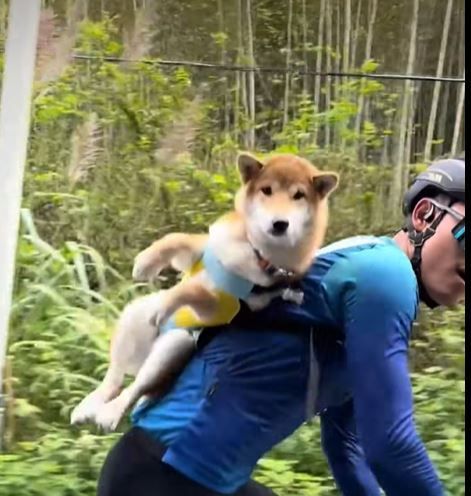
Welcome to 2025! We know it’s going to be a great year. I wanted to take a moment to express my heartfelt gratitude to you — the members of the National Association of Park Foundations. You, our 921 members representing more than 100 park foundations and/or agencies, are the driving force behind NAPF’s work. When I joined NAPF as its executive director in 2021, the organization’s membership structure was in need of significant improvement. Today, our membership offers more benefits than ever before, and as a result, being part of NAPF provides the greatest value it ever has. From the bottom of my heart, thank you for continuing to be part of this community. The year 2024 also saw remarkable growth in our programming, with several educational series and webinars taking place: Winter 2024 NAPF Parks & Connections Virtual Summit ONLINE COURSE: Establishing and Advancing a Park Foundation NAPF Panel Discussion: "Capital Campaign Chronicles: Real Lessons from the Field" The 2024 Lehman Awards at The NRPA Conference Play to Engage: Transforming Community Spaces Through Playful Placemaking ONLINE COURSE: Annual Fundraising for Park Foundations, Friends Groups, and Conservancies NAPF Spring Webinar Series: Houselessness Impacts to Community Green and Blue Spaces NAPF Spring Webinar Series: Effective Board Development and Board Service Webinar NAPF Spring Webinar Series: Mobilizing Your Team to Fundraise and Serve as Ambassadors of Your Mission Building Unified Parks: Enhancing Community Through Park Foundations & How To Start & Grow A Park Foundation WEBINAR: Expanding the Health Impact of Parks: Outdoor Fitness that’s Truly Inclusive In addition to these group events, NAPF worked one-on-one with a record 30 members this year to help them start or grow their park foundations. We also conducted board training and strategic planning for numerous member organizations. Looking ahead to 2025, NAPF is developing new programming and curriculum while bringing back popular offerings from previous years. This includes the online course: Annual Fundraising for Park Foundations, Friends Groups, and Conservancies. As part of our commitment to professional development, NAPF provides certificates of completion for events attended by our community members, and we are exploring the possibility of offering CEUs for our content. NAPF is also eager to work with park agencies interested in starting a new park foundation or reviving an existing one. Additionally, we are happy to partner with established park foundations to ensure they are structured for sustainable growth. 2025 is already shaping up to be the best year ever for parks and recreation philanthropy. Please feel free to reach out to me at execdir@the-napf.org to discuss how the NAPF can help you do what you do even better!

The homeless crisis in the United States has reached alarming levels, with tens of thousands of people living on the streets, many of whom suffer from chronic conditions, substance abuse, and mental health issues. While numerous strategies have been proposed and implemented to address this issue, one often overlooked solution lies in proactive community engagement—specifically, through enhanced funding for parks and recreational programs that can help mitigate the factors leading to homelessness, particularly among youth. By creating vibrant, active spaces and offering robust programming, communities can foster a sense of belonging, provide constructive outlets for energy, and offer early interventions that address the root causes of homelessness before they manifest in adulthood. The Role of Parks in Community Health and Well-being Parks and recreation facilities are more than just green spaces; they are vital components of community infrastructure that promote physical health, mental well-being, and social cohesion. According to the National Recreation and Park Association (NRPA), parks provide essential services that include physical activity spaces, social interaction opportunities, and mental health benefits, all of which contribute to the overall well-being of a community (NRPA, 2021). For youth, these spaces are particularly crucial. Parks offer safe environments where young people can engage in physical activities, learn new skills, and interact with peers, all of which contribute to their development into healthy, well-adjusted adults. Preventing Homelessness Through Early Intervention One of the most significant factors contributing to adult homelessness is a lack of early intervention in youth. High school dropouts, for example, are 4.5 times more likely to become homeless than those who graduate (National Coalition for the Homeless, 2019). In Lane County, for instance, the high school graduation rate is only 80%, leaving one in five young people at a significantly higher risk of falling into homelessness. By investing in park spaces and programs designed to engage youth, communities can address some of the root causes of homelessness early on. Active spaces that include fitness stations, sports facilities, and structured programs like Zumba, tai chi, and after-school activities can provide young people with the stability, mentorship, and physical activity they need to stay on a positive trajectory. These interventions are not just about keeping kids off the streets; they are about fostering environments where young people can thrive. The Importance of Multi-generational and Active Park Spaces There is a need for parks that cater to multiple generations and provide diverse amenities beyond the traditional playgrounds for small children. Parks with fitness stations, ninja courses, and spaces for activities like tai chi or Zumba can attract a broader range of users, from teenagers to adults and seniors, making parks a focal point for community life. Research supports the idea that multi-generational park spaces can reduce crime and increase community engagement (Harnik & Welle, 2011). By creating these active spaces, communities can make parks places of congregation and positive activity, which can, in turn, decrease the adverse behaviors often associated with underutilized or neglected areas. Addressing the Challenges of Funding and Policy One of the significant challenges in creating these active, program-filled spaces is funding. While the equipment and initial setup of these parks are expensive, the real costs often come from maintenance, programming, and ensuring that these spaces remain safe and accessible to all community members. Securing funding for these projects can be difficult, particularly when donors are more focused on immediate, visible crises like homelessness or hunger. However, by shifting the narrative from reactive to proactive solutions, communities can begin to see the value in these investments. Leaders in the outdoor fitness industry have demonstrated how communities can transform underutilized spaces into vibrant community hubs through strategic partnerships and innovative funding models. By leveraging these models, park foundations and community leaders can advocate for the necessary resources to create spaces that will serve as preventive measures against future homelessness. Conclusion The homeless crisis requires a multi-faceted approach, one that includes not only immediate support for those currently on the streets but also long-term strategies to prevent future homelessness. By investing in parks and recreation, particularly in spaces that engage youth and offer multi-generational activities, communities can address some of the root causes of homelessness before they fully develop. These active spaces provide more than just recreation; they offer opportunities for early intervention, community engagement, and the creation of safe, healthy environments where all members of a community can thrive. The solution to the homelessness crisis is complex, but it is clear that proactive, preventive measures like better park and recreation funding must be a part of the strategy. By creating environments that support the well-being of all community members, we can make significant strides in reducing the risk factors that lead to homelessness, ultimately building stronger, more resilient communities. Works Cited Harnik, Peter, and Ben Welle. Measuring the Economic Value of a City Park System. The Trust for Public Land, 2011. National Coalition for the Homeless. Youth Homelessness. National Coalition for the Homeless, 2019. National Recreation and Park Association (NRPA). Parks and Recreation: Essential for Community Well-being. NRPA, 2021.
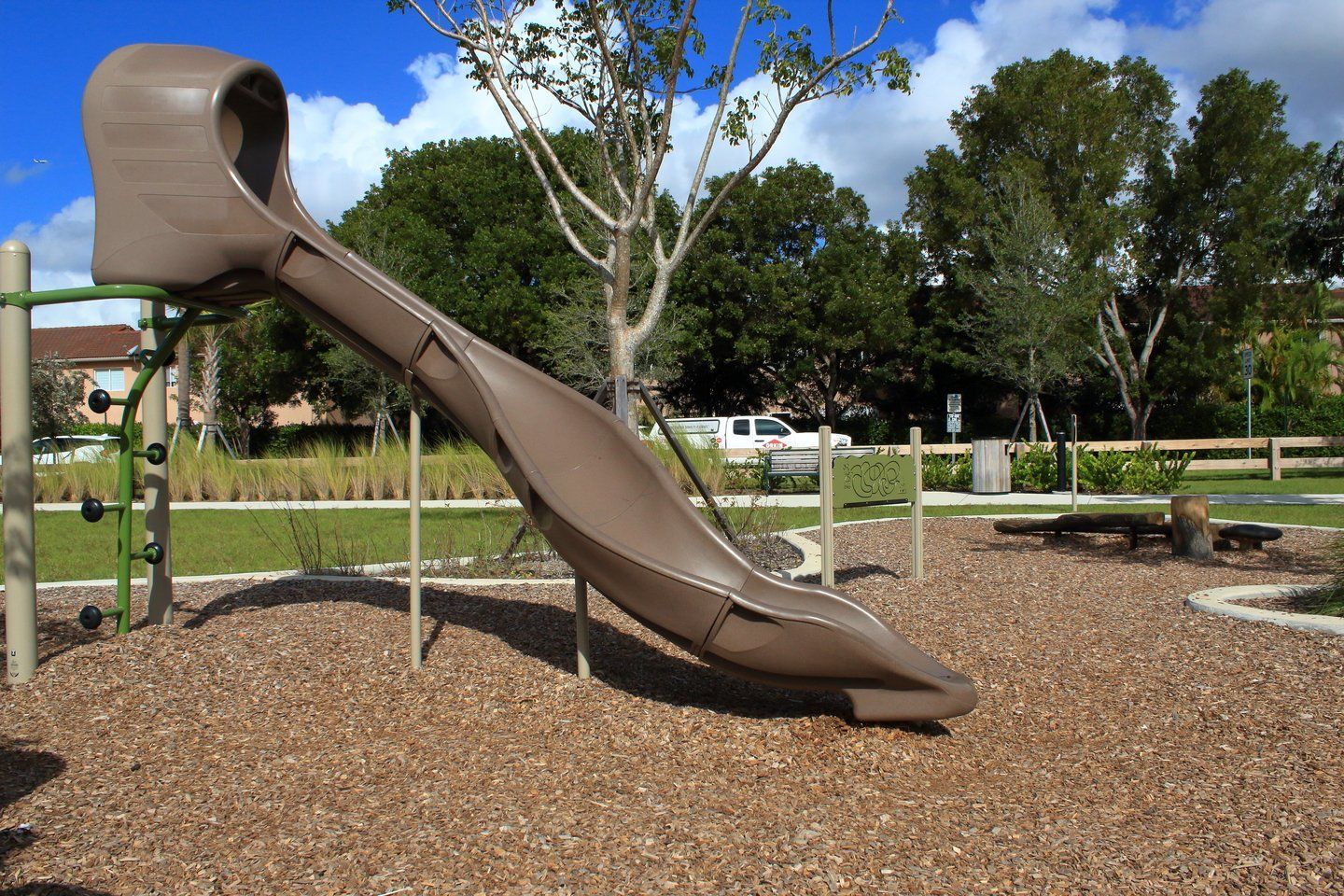
As we prepare for our upcoming webinar, "Play to Engage: Transforming Community Spaces Through Playful Placemaking", we are excited to share an in-depth look at one of our most impactful projects—the transformation of Irving Street Park and Playground in Westminster, Colorado. This project highlights how playful placemaking can achieve remarkable outcomes and serves as a testament to the power of community engagement. The Westminster Legacy Foundation Partnership In March 2023, PLAYCE Studio collaborated with the Westminster Legacy Foundation and Westminster Parks, Recreation, and Libraries to bring our playful placemaking methodology to life. With funding support from Colorado Public Health, this partnership aimed to revitalize Irving Street Park and Playground, turning it into a vibrant community hub. Key Outcomes Achieved Through Playful Placemaking Enhanced Community Involvement: The project kicked off with a series of playful workshops designed to engage residents of all ages and backgrounds. Individuals who did not speak English were supported through provided translation services. By using games and interactive activities, we were able to gather a diverse range of ideas and feedback, ensuring that the park's design truly reflected the community's desires and needs. Increased Trust and Collaboration: Through the playful engagement process, community members developed a strong sense of trust and collaboration. This was evident in the enthusiastic participation and the willingness of residents to work together towards a common goal. The playful approach broke down social barriers, making it easier for everyone to contribute their unique perspectives. Creative Problem-Solving: The playful activities stimulated creative thinking and problem-solving. Residents were encouraged to think outside the box and propose innovative solutions for the park's design. This led to unique features that might not have been considered through traditional engagement methods, such as interactive play structures and community art installations. Accelerated Decision-Making: Playful placemaking sped up the decision-making process. The enjoyable and inclusive nature of the activities made it easier to reach a consensus, allowing the project to move forward quickly. This efficiency was crucial in maintaining momentum and keeping the community engaged and excited about the project. Legacy of Community Champions: One of the most significant outcomes was the creation of a legacy of community champions. The playful engagement process empowered residents to take ownership of the park, fostering a sense of pride and commitment to maintaining and improving the space. These champions continue to advocate for the park and support ongoing community initiatives. Intangible Outcomes and Personal Stories The impact of playful placemaking goes beyond tangible results, touching the lives of individuals in profound ways. Here are some heartwarming stories from the Westminster project: Angelica's Voice: Angelica, a Spanish-speaker and a key figure in the park's community garden, had never been able to provide input at a community event before. Through provided translators, she described the experience as feeling seen and heard not just by municipal leaders but by her fellow citizens who enjoyed and loved the garden. Initially, she said she wouldn't be available for the second meeting, but she returned and brought friends along. Mae's Family: Mae, one of our hired Hmong translators who grew up in the neighborhood, was deeply moved by the process. After the first meeting, she ensured that her elderly mother and brother, who still lived in the area, attended the second meeting. Mae emphasized that this initiative was too important for the future of their community to miss. Unexpected Connections: During one session, two men, one older and one younger, were seen playing at a table. The older man was trying to convince the younger man to accept a valuable gift from his garage, emphasizing that he had no more use for it but wanted the young man to have it. This interaction highlighted the deepening of community bonds through playful engagement. Teenagers' Transformation: Three local high school students attended the workshop initially to get out of class. Confused at first, they were overheard planning to leave during a break. However, they ended up staying for the entire meeting and asked if they could bring friends the next day. They returned the next day, empowered by the opportunity to talk to adults and be part of meaningful conversations. Funding and Support The success of the Westminster project was made possible by the generous funding from Colorado Public Health. This support allowed the Westminster Legacy Foundation and Westminster Parks, Recreation, and Libraries to partner with PLAYCE Studio, leveraging our expertise in playful placemaking to achieve outstanding results. Join Us for the Webinar To learn more about how playful placemaking can transform community spaces and achieve meaningful engagement, join us for our webinar, "Play to Engage: Transforming Community Spaces Through Playful Placemaking". We will dive deeper into the Westminster case study and showcase other successful projects, providing valuable insights and practical tips for park foundation executives and community leaders. Stay tuned for more details, and get ready to be inspired by the power of play in community engagement! #CommunityEngagement #Placemaking #GrantFunding #PlayfulPlacemaking #PLAYCEStudio #Westminster

By PlayCE Studio In the ever-evolving landscape of design and planning, grant funders are increasingly prioritizing projects that demonstrate a commitment to meaningful and inclusive community engagement. This shift reflects a growing recognition of the value that community input brings to creating spaces that are truly reflective of the people who use them. According to recent data, over 60% of grant applications now require evidence of community engagement, and projects that excel in this area are twice as likely to receive funding compared to those that do not. At the heart of this new demand is the concept of playful placemaking—a transformative approach that leverages the universal language of play to foster deeper connections, trust, and collaborative creativity within communities. But what exactly makes playful placemaking the key to meeting these new requirements? The Power of Playful Placemaking Breaking Down Barriers and Creating Inclusivity: Traditional engagement methods often fall short in reaching diverse community members. Playful placemaking breaks down these barriers by inviting participation in fun, inclusive activities that encourage everyone to contribute their ideas and perspectives. This approach is especially effective in engaging underrepresented groups, ensuring a more comprehensive and authentic community input. Building Trust and Empathy: Play naturally builds trust and empathy among participants. When community members engage in playful activities, they are more likely to open up, share their thoughts, and collaborate effectively. This creates a foundation of trust that is crucial for meaningful engagement and the success of planning projects. Enhancing Creativity and Problem-Solving: Playful activities stimulate creativity and out-of-the-box thinking. By incorporating games and playful exercises into the engagement process, planners can tap into the community's collective creativity to develop innovative solutions that might not emerge through conventional methods. Speeding Up the Process and Leaving a Legacy of Champions: Playful placemaking not only accelerates the engagement process but also leaves a lasting impact by creating a network of community champions. Furthermore, these activities empower participants to become advocates for future projects, ensuring a legacy of proactive community involvement and sustained support for ongoing initiatives. Statistics on Community Engagement Requirements The emphasis on community engagement in grant applications is not just a trend; it's becoming a standard. According to the National Endowment for the Arts, 65% of their grants in 2023 mandated robust community engagement components. Moreover, a study by the Knight Foundation found that projects demonstrating high levels of community involvement had a 70% higher success rate in securing funding. Opportunities for Meaningful Community Engagement The rise in demand for meaningful community engagement has opened up numerous opportunities for projects that excel in this area. Grants that require comprehensive community engagement are more abundant, with funders like the Kresge Foundation and the Robert Wood Johnson Foundation leading the way. These funders not only provide financial support but also offer resources and training to help organizations improve their engagement practices. How You Can Meet This Demand for Meaningful Engagement As the demands from grant funders for meaningful and inclusive community engagement continue to grow, playful placemaking stands out as a key strategy for meeting these requirements. By fostering deeper connections, building trust, and enhancing creativity, playful placemaking ensures that community voices are not just heard but actively shape the planning and design process. For organizations seeking to secure funding and create impactful projects, embracing the principles of playful placemaking is not just advantageous—it's essential. Curious to see how playful placemaking works in practice? Join us for our upcoming webinar, "Play to Engage: Transforming Community Spaces Through Playful Placemaking". We'll dive into compelling case studies that showcase the power of play in community engagement, highlighting real-world examples of success. This is an unmissable opportunity for park foundation executives and community leaders to learn how to leverage the power of play to meet grant requirements and make a lasting positive impact. Stay tuned for more details and get ready to be inspired! Sources National Endowment for the Arts Grants Overview - National Endowment for the Arts Knight Foundation Community Engagement - Knight Foundation Kresge Foundation Grantmaking - Kresge Foundation Robert Wood Johnson Foundation - Robert Wood Johnson Foundation These sources provide detailed guidelines and insights into the growing emphasis on community engagement in grant applications, underscoring the importance of inclusive practices in securing funding.



